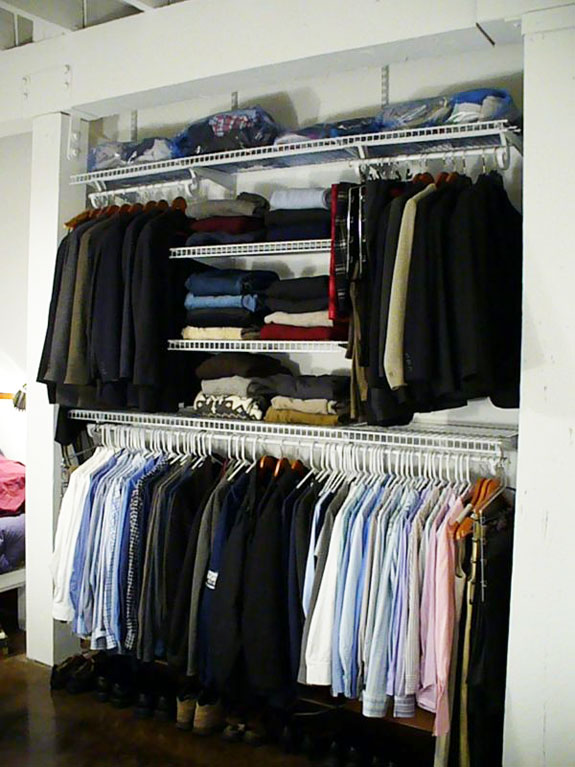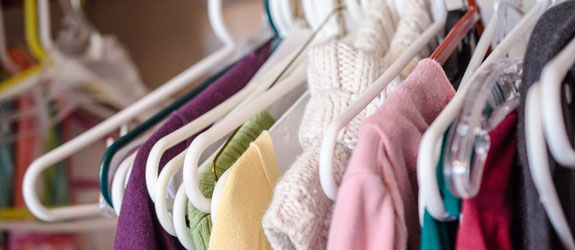There’s nothing more exciting than seeing the first flowers of the year emerge during springtime or the first leaf fall from the tree in autumn. In winter, the first snowfall always feels so magical, and that first breeze on a hot summer night feels simply glorious on our skin.
The changing of the seasons can be a sensational experience, but keeping clothes for all those seasons can wreak havoc on a wardrobe.
When your shorts are getting in the way of your winter parka, it’s time to start organising your wardrobe and transitioning pieces between the seasons. Need some help updating your wardrobe between the seasons? Here is our complete guide on how to transition your wardrobe from winter to spring.
Build A Basic Wardrobe
If you’re short on space or have a cluttered wardrobe, then transitioning your wardrobe between seasons will actually help you utilise space and help better organise your wardrobe. By pulling pieces out and moving in seasonal pieces, your wardrobe will look less cluttered, and you’ll have a better idea of just what is actually in your wardrobe.
But first, we need to mention what can stay all year round.
To begin with, remove everything out of your wardrobe and organise it by item (all the shirts together, all the pants together, etc). First, you need to build a base wardrobe. These are items that should remain in your wardrobe all year along. They’re layering pieces that can be easily mixed in with spring, summer, autumn or winter clothes.
Depending on your job and other needs, your basic wardrobe may differ, but most basic wardrobes include:
- Long-sleeve and short-sleeve shirts (white, black, navy blue in any amount)
- Pants (two or three pairs)
- Layering tops and t-shirts (usually monochromatic, no prints)
- Jeans (one or two pairs)
- Simple black or grey skirt
Most of these items will probably be black, white, grey, navy blue or neutral. That’s all good. These colours work with every season.
Your basic wardrobe can be as big or as small as you like, provided you have space. Throughout the year, you’ll mix your seasonal pieces in with your basic wardrobe to create new looks that will look smart and in-season.

Loft open closet by Josh and Melanie Rosenthal, November 25, 2006. CC-BY-SA.
Transition Your Wardrobe
Now that you have your basic wardrobe set up, let’s look at what’s left and organise the rest of your wardrobe into different seasons. You may want to use plastic storage bins or vacuum seal clothing bags to store whatever clothing isn’t going back in your wardrobe immediately and to keep them free from dust.
First, look at the obvious clothing: shorts, t-shirts, heavy sweaters and coats. These are obviously winter and spring clothes so make two piles – one for each season – and sort your clothes. Put whatever season it is not in the box (if it’s wintertime, put away your summer clothes).
You will probably have a lot of items that are in-between seasons, like cropped pants and some long-sleeve shirts. These items can be tricky because it could be warm one day and cold the next. Keep spring and summer clothes together in the same box and winter and fall in another. You can easily pull out some of your summer clothes when those spring days start to get really warm because they’re all organised into the same box.
When sorting shirts and determining which will be spring and autumn shirts, remember the general rules about seasonal colours:
- Spring: Pastels, floral prints
- Summer: Bright colours
- Autumn: Reds, oranges, browns, yellows, deep blues
- Winter: White, bright red, dark blue, black
Of course, if you want to wear bright colours in winter, no one will stop you. Just use this guide as a way to help organise yourself.
Where To Store Your Clothes
Once you’ve sorted your wardrobe, it’s time to store it all to help transition your wardrobe from winter to spring or summer to autumn.
If your wardrobe doesn’t already have it, install wire wardrobe shelving above the clothing rack in your wardrobe. This will give you space to put your plastic storage bins, and they’ll be out of your way and out of sight.
Having a wardrobe shelving system installed below where your clothes hang can also repurpose lost space. Installing drawers and alternative storage ideas can help make it easier to store knee-high socks, tights and other seasonal clothes and accessories.
Don’t forget about the spaces under and above your bed. If your storage bins are long and short, store them under the bed for easy access. If they are bigger, install wardrobe shelves over your bed to keep them out of sight yet nearby in case you need something.
With these simple tips, hopefully, your wardrobe now looks cleaner and feels fresh. Which season is your favourite to dress for? Share your thoughts with us!
Featured image: My closet at my old condo by m01229, May 11, 2013. CC-BY.



Fiona Wilson helps people all over Australia to better organise their homes and lives. Working closely with Wardrobe World and GarageSmart, she is incredibly passionate about finding practical lifestyle solutions for her clients.